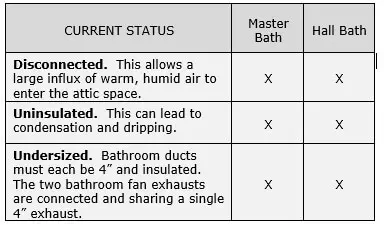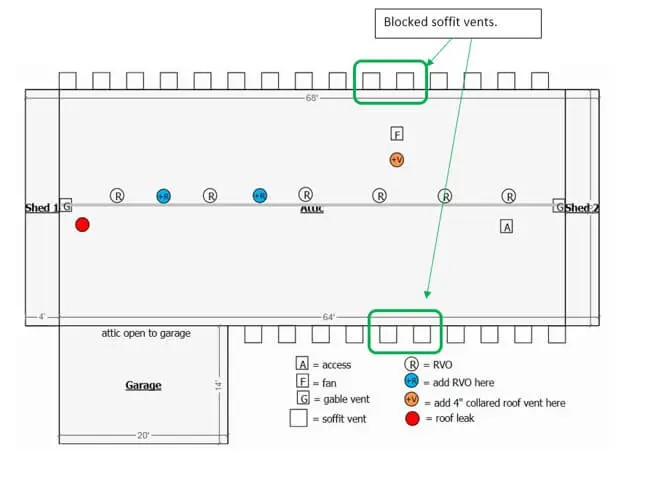Lynnwood Attic Mold Inspection Reports
Below are recent inspections of attic mold issues we’ve performed in Lynnwood.
Project Type > Attic Mold Inspection in Lynnwood
PROJECT SUMMARY
REASON FOR INSPECTION:
- A home inspector called out mold in attic. Client called for an attic inspection and an estimate for remediation work.
CAUSE OF MOLD:
- Disconnected and uninsulated bath fan ducting is exhausting warm, humid air into the attic. Roof leaks at plumbing penetrations have contributed to high moisture in attic. Lack of proper ventilation and air sealing of the attic allowed condensation to occur on the roof sheathing and trusses during winter.
JOBSITE PHOTOS
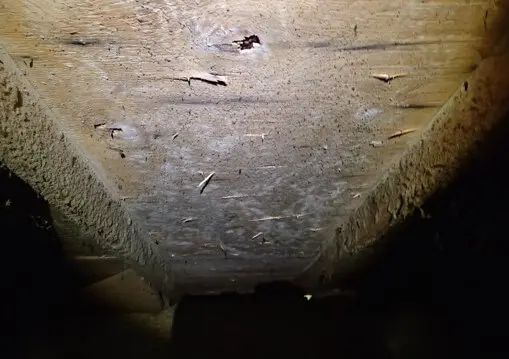
Mold on roof sheathing and trusses
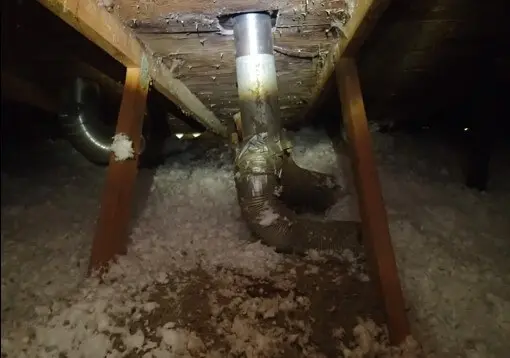
Disconnected Bath Fan Ducting
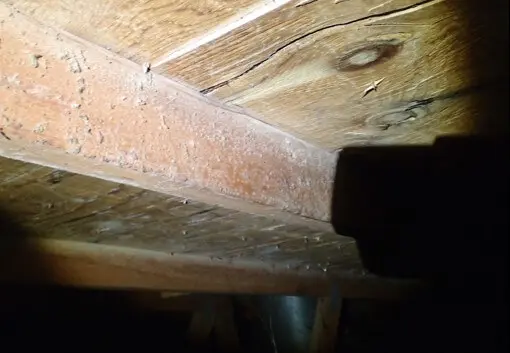
Mold Growth on Trusses
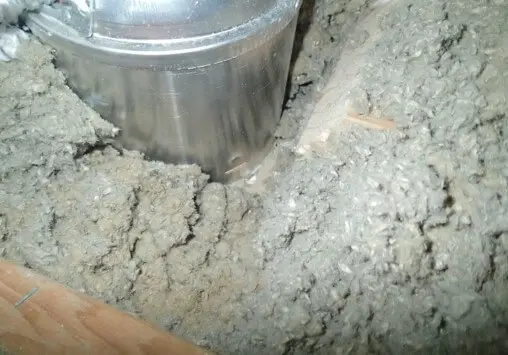
Can Light needs Air Sealing
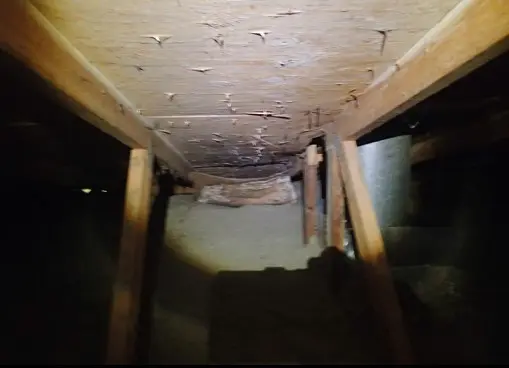
Bird Blocking/ Lower venting is blocked
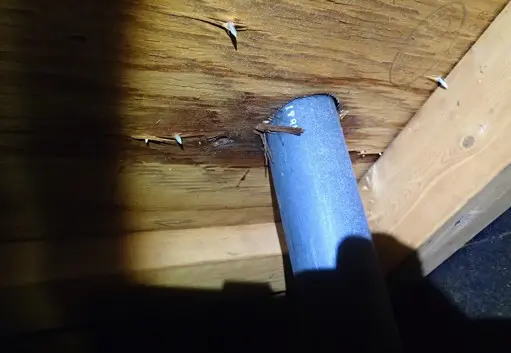
Roof Leak at Plumbing Penetration
OBSERVATIONS
MOLD ON SHEATHING:
- Heavy mold covers approximately 40% of the attic sheathing.
- Moderate mold covers approximately 40% of the attic sheathing.
- Light mold covers approximately 10% of the attic sheathing.
MOLD ON TRUSSES:
- Moderate mold is present on approximately 20% of the roof trusses.
- Light mold is present on approximately 10% of the roof trusses.
MOISTURE & LEAKS:
- Roof leak(s) found: Obvious roof leak or leaks were noted in the attic. To prevent further damage, it is necessary to hire a professional roofing contractor to resolve the leaks immediately. Environix can provide the names of reputable contractors at the customer’s request. The location of the roof leak is near the plumbing penetration.
UPPER ROOF VENTILATION:
PITCH:
- Normal pitch.
- Two shed roofs are present.
STYLE:
- RVO (Roof Vent Opening) style vents installed near ridge. Six total RVOs present. The RVOs are dispersed unevenly.
- Gable vents. Two gable vents installed.
DETAILS:
- Insufficient quantity of RVOs. The current quantity of RVOs is not providing sufficient air flow in the attic.
STATUS:
- Possibly contributing. The current ridge area venting problems may be contributing to condensation and mold growth.
SOFFIT VENTILATION:
- Proper ventilation is necessary to minimize condensation and subsequent mold growth. All areas of improper ventilation must be addressed to ensure the effectiveness of our process. Current code calls for 1sqft of ventilation for every 300 square feet of attic space, distributed evenly between the ridge and soffit area (i.e. 1sqft of soffit venting for every 600 sqft of upper floor space).
STYLE:
- Bird blocking. Every other bay.
DETAILS:
- Blocked by insulation & baffles. In several areas the vents are blocked by the baffles, which have been pushed up by inappropriately installed insulation. This limits the influx of fresh air through the attic, leading to excess condensation and mold growth. Environix will address this in the bid, below.
STATUS:
- Possibly contributing. The current soffit venting problems may be contributing to condensation and mold growth.
AIR SEALING:
OBSERVATIONS:
- Unsealed. The ceiling currently lacks proper air sealing, which can allow excess moisture and heat to escape into the attic area. This air leakage is a key cause of energy loss, attic condensation and mold growth. NOTE: Air sealing was not required by code until recently. Therefore, the lack of air sealing does not indicate a failure of the original homebuilder.
STATUS:
- Likely contributing. The lack of air sealing is likely contributing to the condensation and mold growth in the attic. Environix will address this in the bid, below.
CAN LIGHTS:
OBSERVATIONS:
- Air sealed can lights. Nine factory air sealed can lights currently installed. However, the air sealing on these can lights could be improved.
- Non IC-rated, non-air sealed can light. 1 non-IC rated can light currently installed. This can light is also not air sealed. This air leakage can be a key cause of energy loss, attic condensation and mold growth. NOTE: Air sealing was not required by code until recently. Therefore, the lack of air sealing does not indicate a failure of the original homebuilder.
STATUS:
- Contributing to mold growth. The lack of air sealing around the can lights is a significant contributing factor in the condensation and mold growth on the attic sheathing. Environix will address this in the bid, below.
OTHER CONTAMINATION:
- Rodent. Evidence of past or present rodent infestation was noted, contaminating the insulation.


